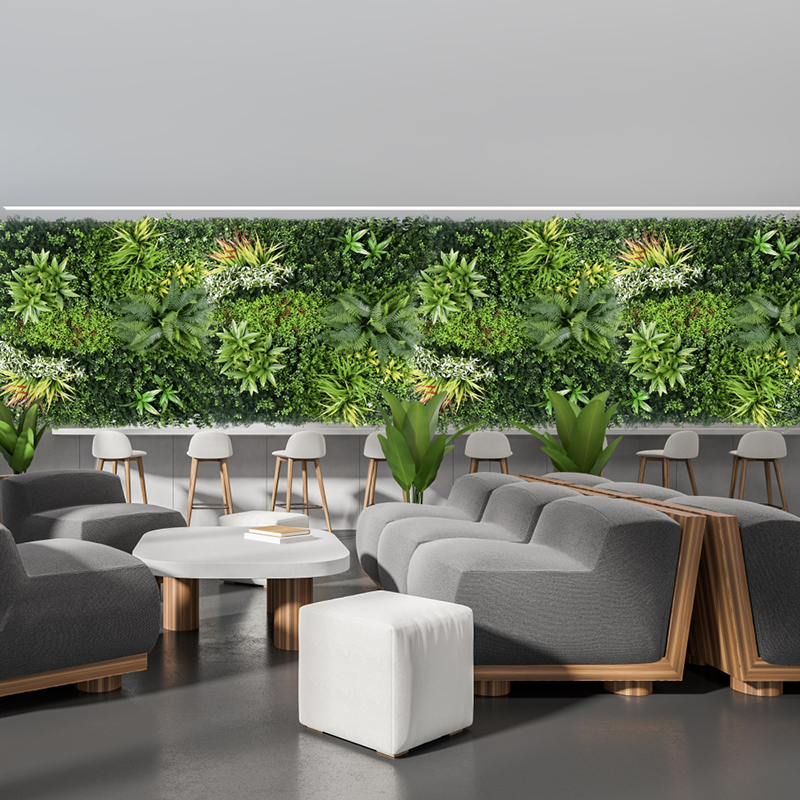The Role of 3D Artificial Vertical Gardens in Community Building
3D artificial vertical gardens are redefining urban landscapes by merging aesthetic innovation with functional sustainability. Beyond their environmental and visual appeal, these structures play a pivotal role in fostering community cohesion, encouraging public engagement, and addressing social challenges. Below are key ways they contribute to vibrant, connected neighborhoods.

Creating Shared Spaces for Social Interaction
Vertical gardens transform underutilized walls, rooftops, or alleys into inviting communal areas. By introducing greenery into concrete-heavy environments, they create natural gathering spots where residents can relax, converse, or host events. For instance, a vertical garden installed on a residential building’s façade might become a focal point for neighbors to meet while tending to plants or enjoying the shade.
These spaces also bridge generational gaps. Children learn about ecology through hands-on activities like planting or monitoring growth, while older adults share gardening tips or cultural stories tied to specific species. Community-led maintenance programs further strengthen bonds, as participants collaborate to water, prune, or repair the garden, fostering a sense of ownership and pride.
Promoting Environmental Awareness and Collective Action
Artificial vertical gardens serve as educational tools that inspire residents to prioritize sustainability. By showcasing how green infrastructure improves air quality, reduces heat islands, or supports biodiversity, they spark conversations about local environmental issues. For example, a garden installed near a school might host workshops on composting or water conservation, encouraging families to adopt eco-friendly practices at home.
Collective participation in garden projects—such as designing layouts or selecting plant varieties—empowers communities to tackle shared challenges. Residents might collaborate to petition for additional green spaces or advocate for policies that prioritize urban greenery. This collaborative spirit extends beyond gardening, fostering a culture of mutual support and civic responsibility.
Enhancing Cultural Identity and Artistic Expression
The customizable nature of 3D vertical gardens allows communities to reflect their unique heritage and values. Groups can incorporate culturally significant plants, patterns, or colors into the design, turning the garden into a living monument to local traditions. A neighborhood with a strong immigrant population, for instance, might feature species native to residents’ home countries, creating a shared symbol of diversity and belonging.
Artistic collaborations also thrive in these spaces. Local artists might be invited to paint murals on garden panels or integrate sculptures into the structure, blending horticulture with visual art. Festivals or exhibitions centered around the garden can attract visitors, boosting community pride and economic activity in the area. These initiatives celebrate creativity while reinforcing the garden’s role as a cultural landmark.
Supporting Mental Health and Well-Being
Urban environments often lack access to nature, contributing to stress and isolation. Vertical gardens mitigate this by introducing calming green elements into daily life. Residents passing by the garden might pause to appreciate its beauty, reducing anxiety and improving mood. For those living in high-rise buildings, even a glimpse of greenery from a window can enhance mental well-being.
Community gardens also provide therapeutic opportunities for vulnerable groups. Veterans, seniors, or individuals recovering from trauma might participate in gardening programs as a form of rehabilitation, finding solace in nurturing plants and connecting with others. These activities promote inclusivity, ensuring that the benefits of green spaces are accessible to all.
Conclusion
3D artificial vertical gardens are more than decorative additions—they are catalysts for community transformation. By creating shared spaces, promoting sustainability, celebrating cultural identity, and supporting mental health, they address multiple facets of urban life. As cities continue to grow, these structures offer a scalable, creative solution to building stronger, more resilient neighborhoods.
Contact: Amy
Phone: 86-15311787313
E-mail: info@foszmac.com
Whatsapp:86-15311787313
Add: Fengtai District, Dacheng Road, No.24 Building, Room 203, Beijing, China